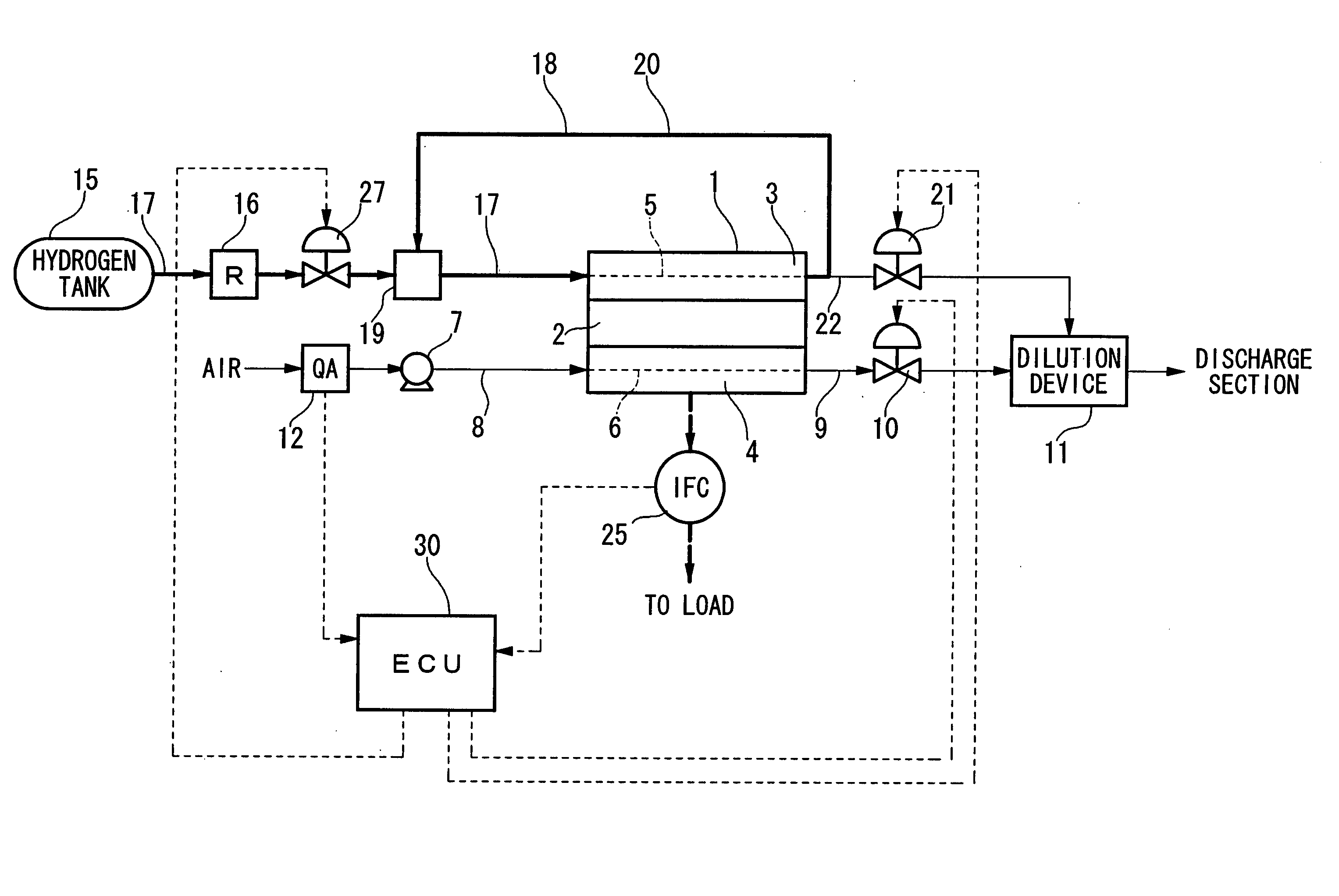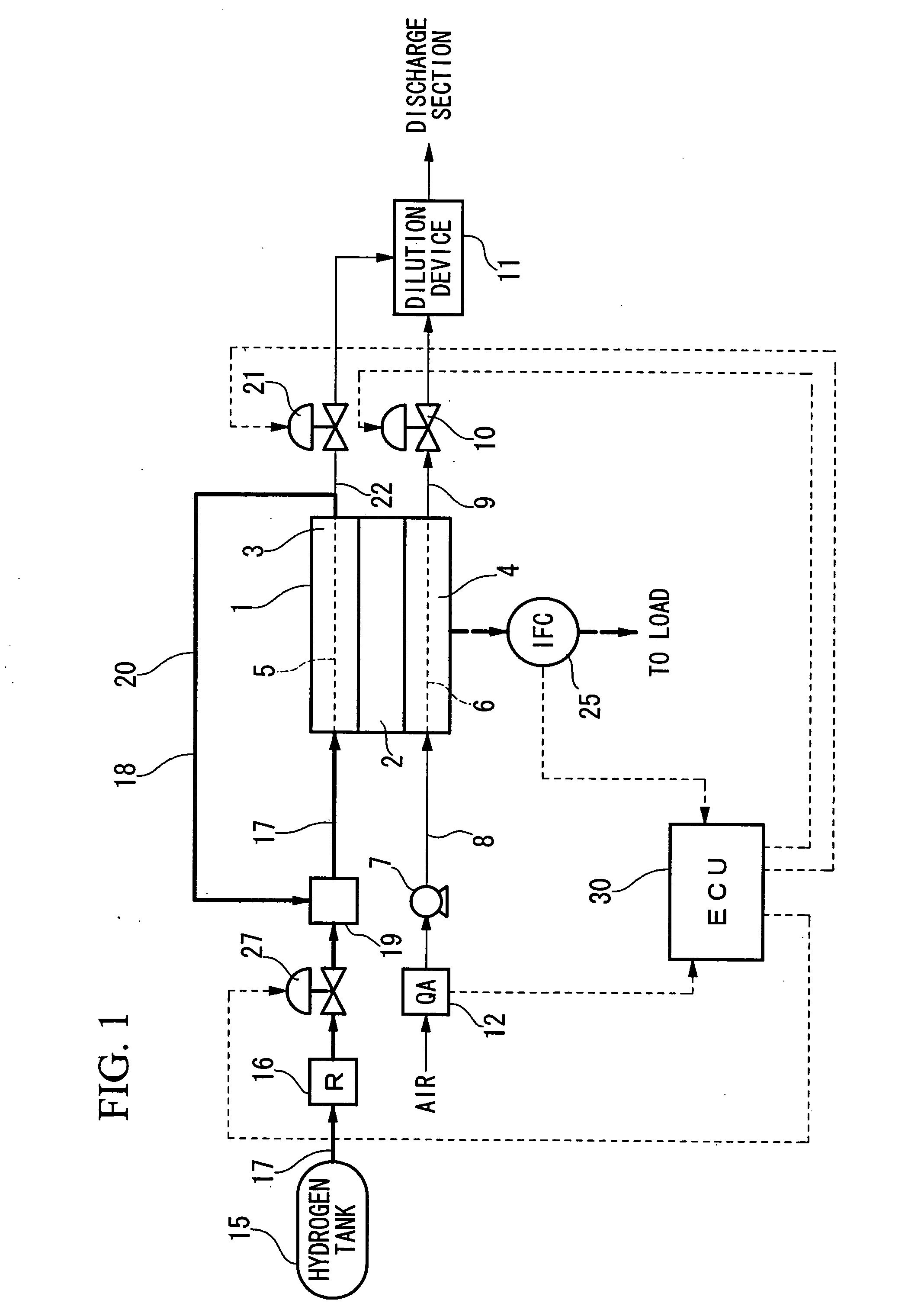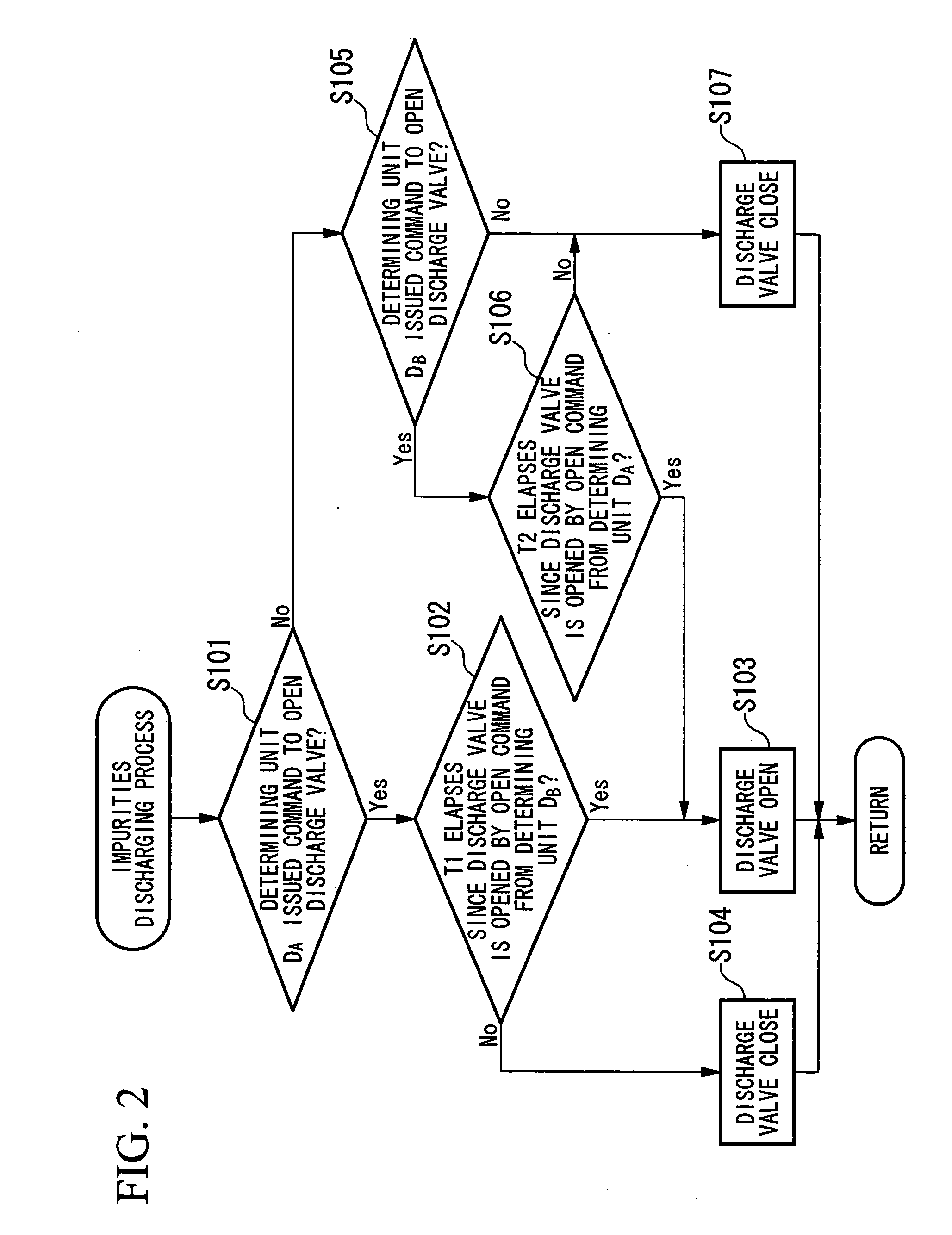Fuel cell system and method for discharging reaction gas from fuel cell
a fuel cell and reaction gas technology, applied in the direction of fuel cells, solid electrolyte fuel cells, electrical equipment, etc., can solve the problems of unstable power generation of the fuel cell, deterioration of power generation efficiency, and difficulty in controlling the concentration of diluted hydrogen, so as to improve the efficiency of electrical power generation, prevent the more excessive discharging of reaction gas containing impurities, and improve the effect of electrical power generation
- Summary
- Abstract
- Description
- Claims
- Application Information
AI Technical Summary
Benefits of technology
Problems solved by technology
Method used
Image
Examples
first embodiment
[0050] First, a first embodiment of a fuel cell system according to the present invention will be explained with reference to FIGS. 1 to 3.
[0051]FIG. 1 is schematic diagram illustrating a fuel cell system having the fuel cell system according to the present invention, and this fuel cell is mounted on a fuel cell vehicle in this example.
[0052] A fuel cell 1 generates electrical power from a chemical reaction of reaction gases, and the fuel cell 1 includes a plurality of cells, and each cell includes, for example, a solid polymer electrolyte membrane 2 made of solid polymer ion-exchange membrane and the like sandwiched between an anode 3 and a cathode 4 (in FIG. 1, only one cell is shown). When hydrogen gas (reaction gas) is supplied to a reaction gas communication path 5 of the anode 3 as a fuel gas, and air containing oxygen (reaction gas) is supplied to a reaction gas communication path 6 of the cathode 4 as an oxidizer gas; hydrogen ion generated by a catalytic reaction in the a...
second embodiment
[0074] Next, the fuel cell system according to a second embodiment of the present invention will be explained with reference to FIGS. 5 to 7.
[0075] The major difference in the discharge systems for a fuel cell between the first and the second embodiment is that the discharge systems of the second embodiment includes two discharge valves for discharging anode off-gas.
[0076] More specifically, as shown in FIG. 5, an anode off-gas discharge path (discharge path) 22 including the first discharge valve 21A is branched from the anode off-gas path 18 and is connected to the dilution device 11. Furthermore, an anode off-gas discharge path 24 including the second discharge valve 21B is branched from a portion of the anode off-gas discharge path 22 located upstream from the first discharge valve 21A, and the anode off-gas discharge path 24 is also connected to the dilution device 11. In the dilution device 11, anode off-gas discharged from the anode off-gas discharge paths 22 and 24 is dilu...
third embodiment
[0094] Next, the fuel cell system according to a third embodiment of the present invention will be explained with reference to FIGS. 9 to 11. Since the configuration of the discharge system in the third embodiment is the same as that in the first embodiment shown in FIG. 1, the discussion of the third embodiment is omitted.
[0095] The fuel cell system of the third embodiment differs from the first embodiment in that the determining unit used for the decision on whether or not discharge of impurities has is selected between the determining unit DA and the determining unit DB, and the selection is made according to a preset condition which indicates the operating status of the fuel cell 1.
[0096] More specifically, in the third embodiment, two determining units are selected based on modes indicating the operating status of the fuel cell 1: Modes A and B. Mode A indicates that power generation by the fuel cell 1 is stable, and Mode B indicates the situation other than Mode A. In Mode A...
PUM
| Property | Measurement | Unit |
|---|---|---|
| DA | aaaaa | aaaaa |
| electrical power | aaaaa | aaaaa |
| time period | aaaaa | aaaaa |
Abstract
Description
Claims
Application Information
 Login to View More
Login to View More - R&D
- Intellectual Property
- Life Sciences
- Materials
- Tech Scout
- Unparalleled Data Quality
- Higher Quality Content
- 60% Fewer Hallucinations
Browse by: Latest US Patents, China's latest patents, Technical Efficacy Thesaurus, Application Domain, Technology Topic, Popular Technical Reports.
© 2025 PatSnap. All rights reserved.Legal|Privacy policy|Modern Slavery Act Transparency Statement|Sitemap|About US| Contact US: help@patsnap.com



